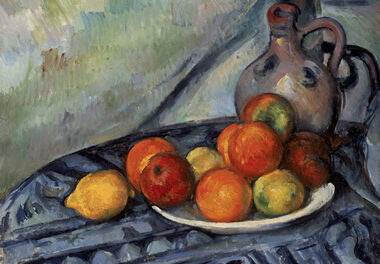In spite of threatening weather and the competition presented by the Chamber Arts Society’s offering of the Perlman-Schmidt-Bailey Trio (Navah, Itzhak’s daughter, having been heard here last spring to universally positive reviews) in Duke’s Reynolds Industries Theater, a respectable audience of vocal music devotees (including some of the area’s other prominent singers) was on hand in Baldwin Auditorium on the evening of September 14 for Susan Dunn’s recital of primarily art songs presented with her collaborative pianist David Heid.
The program was carefully constructed with small groups of songs by different composers where individual items were clearly chosen for logical textual or musical reasons. The opening group of three Handel arias (the only operatic works on the program), “Oh, had I Jubal’s Lyre” from Joshua , and “In Jehovah’s awful sight,” and “Choirs of angels” from Deborah , formed a mini vocal sonata of fast-slow-fast movements. Diction was good, as it was throughout the evening, and the rendition was charming; Handel is not a composer whose music would have sprung to this reviewer’s mind as repertoire for Dunn. There followed a group of five Schubert lieder to Goethe texts, three associated with Mignon and two with Gretchen, the last of these including Benjamin Britten’s completion of the portion that Schubert did not set. The first half closed with a group of three songs by Verdi – yes, that’s right: he wrote two sets of six and some other individual ones for a total of approximately two dozen (including some alternate versions) liriche da camera , as art songs are called in Italian, or Composizione da camera per canto e pianoforte , as he called them in the printed editions. They are way too neglected and Dunn brought the three representative selections brilliantly to life, the last, “L’Esule” (“The Exile”), which is quite Rossini-esque, being especially well rendered with marvelous gestures and facial expressions.
The second half opened with a group of five of Hugo Wolf’s Mörike Lieder , again superbly rendered, although the rationale of their selection and ordering was not as transparent as for the other groups. These were followed by a group of three mélodies of Gabriel Fauré, again assembled (with a reversal of the printed order of the first two) to create another mini vocal sonata. Dunn’s French was of near native quality, as were her German and Italian, a real accomplishment for a singer whose entire training was in America; this reviewer’s native fluency in French was not acquired within our borders. Indeed, only two or three minor mispronunciations were detected in the entire evening.
Re-entering after changing into a more informal, more colorful, but no less glamorous and glittering jacket, Dunn prefaced her closing group of four songs, one a stand-alone and three from musicals, by Richard Rodgers to words by Larry Hart, in honor of the centennial of the composer’s birth, with extensive and entertaining remarks and stories about the origin and composition of each of them. She followed up with fabulous interpretations, with the rendering of “To Keep My Love Alive” being the most memorable, bringing the evening to a spectacular close.
Some of the songs selected, Handel’s “Oh, had I Jubal’s Lyre,” the five Schubert lieder, Fauré’s “Chanson d’Amour,” and Rodgers and Hart’s “Blue Moon” and “My Funny Valentine,” for example, were chestnuts of the repertoire. Others, the Verdi especially, were quite well off the beaten path. There were no encores, perhaps because Dunn was visibly suffering from the high humidity and allergies, suffering which clearly worsened as the evening progressed, although never to the point of affecting her sound production. Or perhaps she felt that the program was too perfect a structure to spoil with an addition?
Apart from one oversight, the program booklet was likewise an exemplary production. The program with titles, composers and life dates was followed by the texts of all the songs not in English, carefully printed so that no page turns were required not only in the midst of a song, but even within a group. The poets and translators of the side-by-side English versions were not credited however. The last inside page gave appropriate bios of the artists.
This was the best recital Dunn and Heid have given yet, which is not meant to denigrate any of their previous Duke outings. Friends accompanying me agreed that they improve noticeably with each one they give, and this one blew us away. Dunn’s voice, which we often associate with big opera roles, had a perfect lightness for this repertoire, and she used her dramatic interpretive skills acquired on the opera stage to perfection as well. Heid matched Dunn’s volume perfectly throughout and handled the piano parts and the lengthy preludes and postludes to some of the songs exquisitely. Once again, a recital fulfilling a faculty obligation has proved to be a Carnegie Hall quality event. Even the audience was in perfect form, knowing when, or perhaps more accurately when not, to applaud. The spectacular rendition of “To Keep My Love Alive” got well-deserved special recognition. This reviewer looks forward with anticipation to their next performance.











